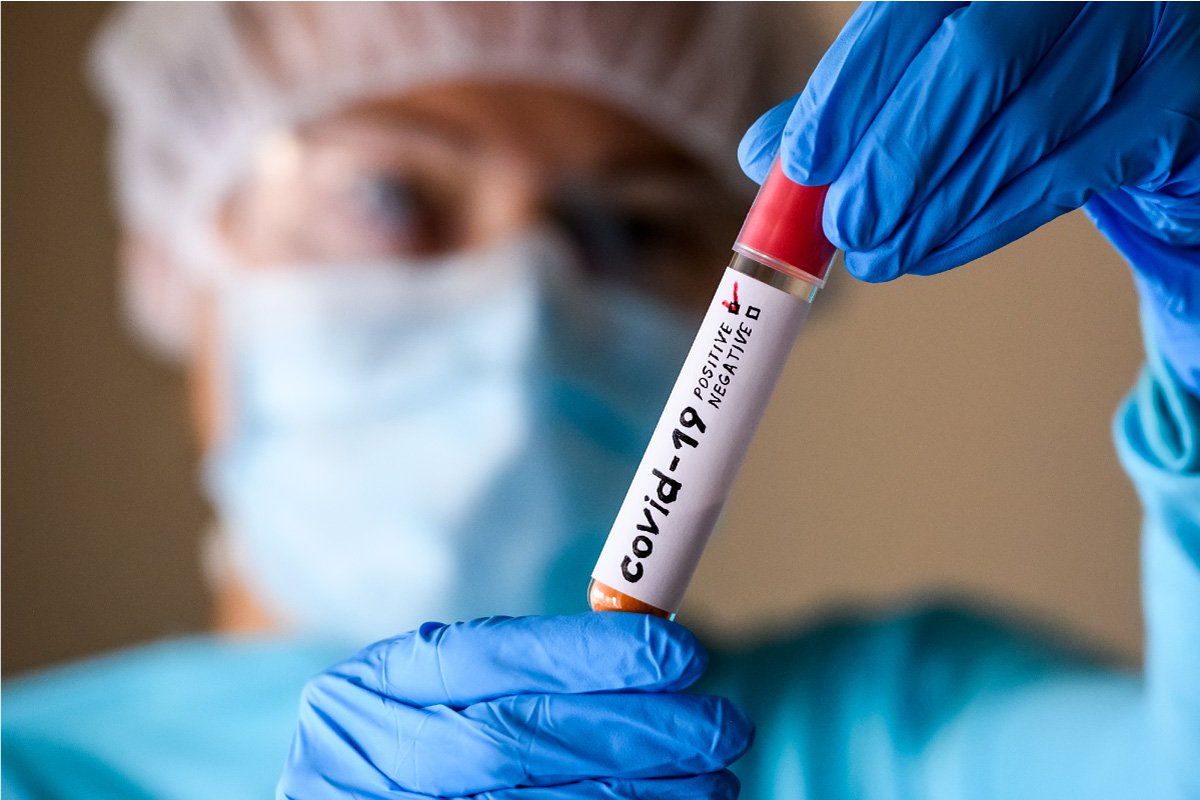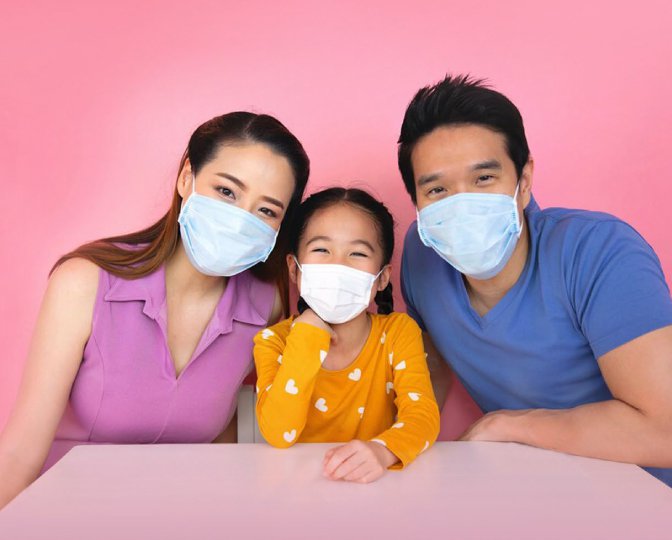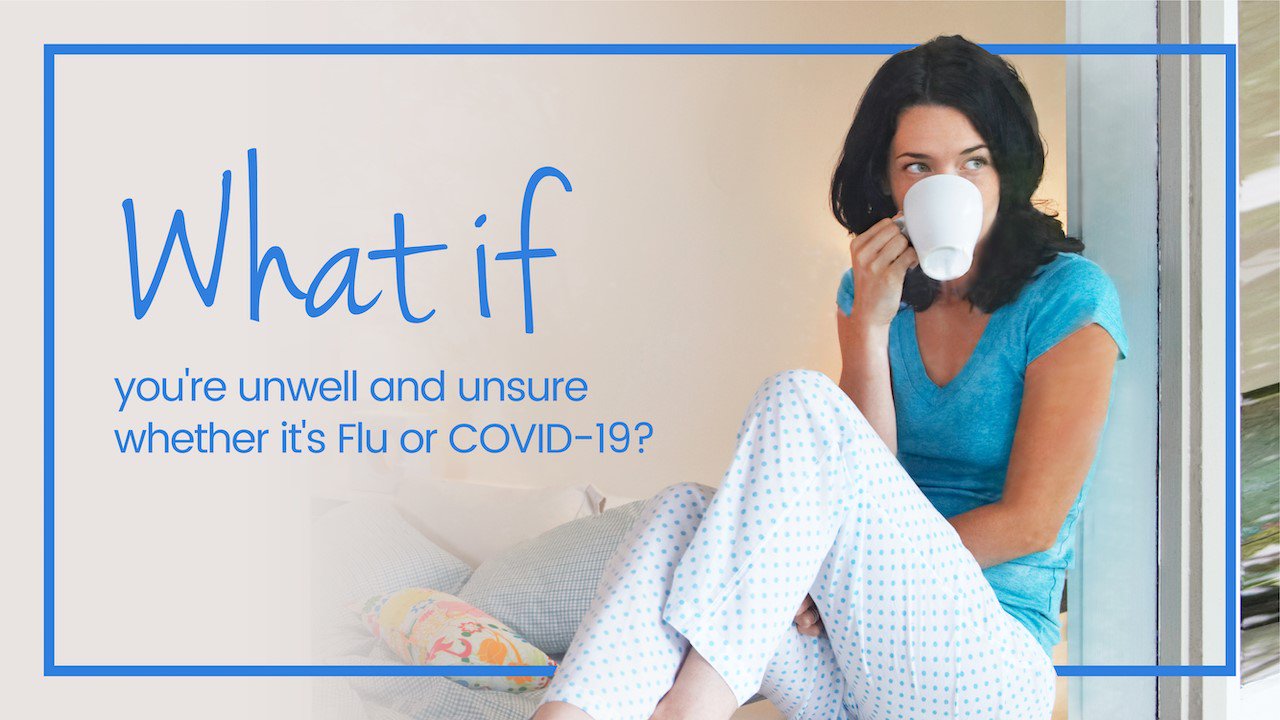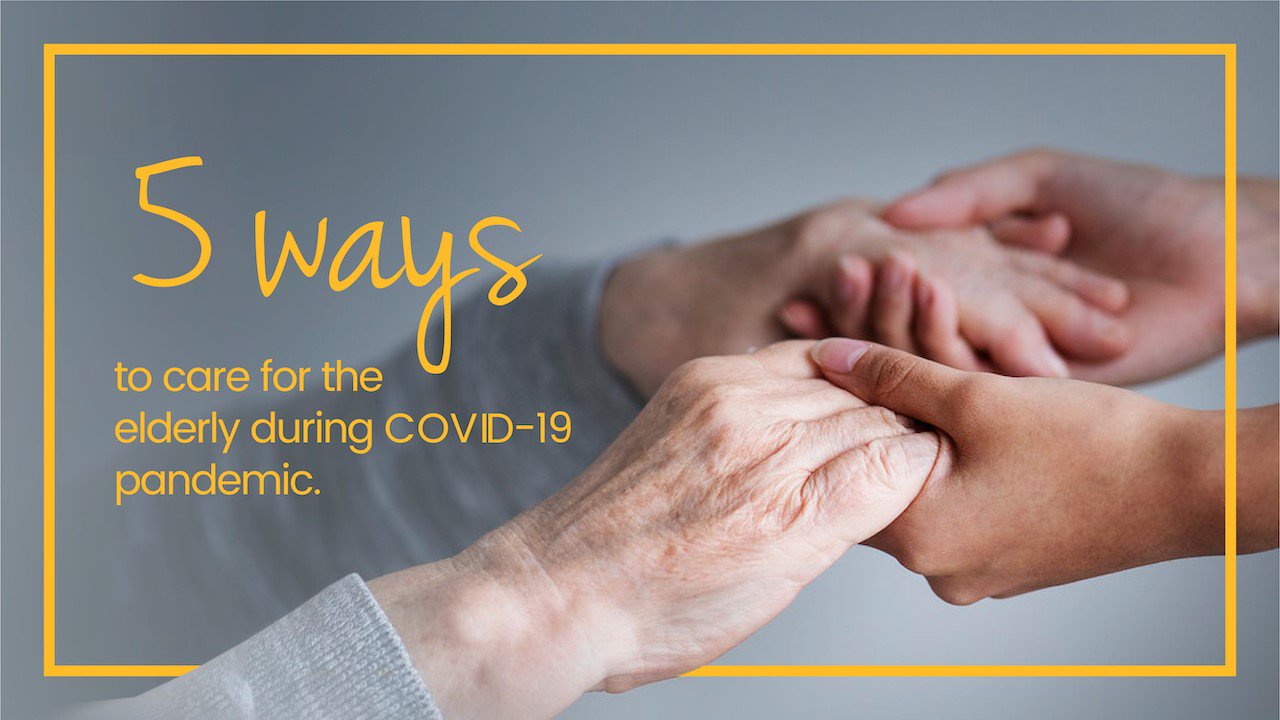
Stay informed and know the facts about COVID-19 in Malaysia including causes, symptoms, diagnosis, prevention, and vaccines. Explore Pantai Hospitals’ comprehensive care and support services, encompassing screening facilities, eHealth telemedicine options, and robust safety and preparedness measures. At Pantai Hospitals, your health and safety are our priorities.
Get information on COVID-19 facts and symptoms, learn how you can reduce the risk of infection, steps you need to take if you have COVID-19 symptoms, download self-care guide and more. It is crucial to learn how to protect your own health and the health of your family members during this pandemic.
There are a few types of Coronavirus. Coronaviruses are types of virus that typically affect the respiratory tract of mammals, including humans. They are associated with the common cold, pneumonia, and severe acute respiratory syndrome (SARS) and can also affect the gut.
Different types of human coronaviruses vary in the severity of illness they cause and how far they can spread.
Rare but dangerous types include MERS-CoV, which causes Middle East Respiratory Syndrome (MERS), and severe acute respiratory syndrome (SARS-CoV), the coronavirus responsible for SARS.
In December 2019, a novel coronavirus, COVID-19 (previously named ‘2019-nCoV’) has caused an outbreak of respiratory illness. The virus was first detected in Wuhan City, Hubei Province, China. Early on, many of the patients in the outbreak area reportedly had some link to a large seafood and animal market, suggesting animal-to-person spread. However, a growing number of patients reportedly have not had exposure to animal markets, indicating person-to-person spread is occurring.

Since late 2019, the world has been battling the threat of COVID-19. The spread of the virus and the occurrence of new variants are expected.
The SARS-CoV-2 virus is an RNA virus that constantly undergoes mutations, creating new variants. Some variants emerge and disappear while others persist. New variants will continue to emerge. When new variants emerge, the virus’s properties, such as how easily it spreads, the associated disease severity, or the performance of vaccines also change.
WHO and its researchers have been monitoring and designating multiple variants of concern (VOCs) and variants of interest (VOIs). These classifications are based on the variants’ assessed potential for expansion and replacement of prior variants, for causing new waves with increased circulation, and the need for adjustments to public health measures.
WHO has named variant B.1.1.529 as Omicron and designated it as a VOC on 26 November 2021. This variant has a high number of mutations between 26 and 32 in its spike protein. Since its first detection in South Africa on 24 November 2021, this variant has spread to dozens of countries globally, including the first case in Malaysia on 3 December 2021.
Since early 2022 until now, the dominant variant is Omicron. Omicron represents the most divergent VOC seen to date. Since its emergence, various new sub-variants of Omicron have been detected, including XBB, BA.4, BA.5, BA1.16 and BA2.86. So far, they have been characterised by properties of evasion of existing population immunity and a preference to infect the upper respiratory tract (versus lower respiratory tract), as compared to pre-Omicron VOCs.
Alpha, Beta, Gamma, Delta as well as the Omicron parent lineage (B.1.1.529) are considered previously circulating VOCs whereas XBB.1.5 is classified as a VOI.
As of 19 December 2023, WHO is classifying JN.1 as a separate variant of interest (VOI) from the parent lineage BA.2.86 due to its rapidly increasing spread.
Adhering to SOPs and getting vaccinated against COVID-19 are two effective ways to reduce risk of contracting COVID-19 or prevent long-term complications if infected with the virus. At this point, complete your primary vaccination and booster dose as immunisation remains the best way to reduce your risk of severe illness, hospitalisation, and death from COVID-19.
If you know someone who is confirmed to have COVID-19 and you have been in close contact with them, you should also get tested. Close contacts of confirmed COVID-19 cases were those as below:
The worldwide pandemic has necessitated basic hygiene practices, proper usage of face masks, frequent hand washing, physical distancing, and raised the need for easily accessible COVID-19 tests in Malaysia.
COVID-19 tests in Malaysia are essential in preventing the spread of the pandemic. It can also help patients immediate care.
There are currently two types of COVID-19 tests being used by the health authorities worldwide to detect the virus. The two tests are:To help you understand the function of each test, here’s a helpful comparison of the tests currently available:
| Types of COVID-19 | Tests Molecular Tests (RT-PCR) | Antigen Tests (RTK-Ag) | |||
| Also known as | Diagnostic test, viral test, molecular test, nucleic acid test, amplification test (NAAT), RT-PCR test | Rapid Diagnostic Test, usually available as a self-test kit (because the turnaround is often quicker than an RNA test) | |||
| How is the test conducted | Commonly conducted by healthcare professional | •
Available as a
self-test kit
• Can also be conducted by a healthcare professional | |||
| How is the sample taken | Nasal or throat swab or saliva | Nasal or throat swab or saliva | |||
| How long does it take for results | Same day (some locations) or may be up to a week | One hour or less | |||
| Is another test needed | This test is highly accurate, usually does not require a second | Positive
– highly
accurate
Negative – may need to be confirmed with a molecular test | |||
| What it shows | Diagnoses active coronavirus infection | Diagnoses active coronavirus infection | |||
| What it can’t do | Within the 90 days of someone contracting COVID-19 and getting treated; it won’t be able to test if a person has recovered or not | It won’t be able to rule out active coronavirus infection (antigen tests are more likely to miss an active coronavirus infection, compared to molecular tests) |
The COVID-19 Neutralising Antibody Test detects and measures the level of antibody in your body post completion of the COVID-19 vaccination or a previous COVID-19 infection.
This test is conducted two weeks post vaccination to check whether your body responds to the vaccination and how much of these antibodies are neutralising antibodies. It also helps assess potential antibody-association immunity. This test can also identify individuals with past exposure to the COVID-19 infection.
Updated as of 19 December 2023:
Upon completing five (5) days of isolation period, daily activities can be resumed. However, it is necessary to take the following preventive measures until the 10th day to avoid the risk of spreading COVID-19 infection to others.
Updated as of 19 December 2023:
| Health Status | Quarantine | COVID-19 Test Requirement | Practice Preventive Measures | Release from Quarantine |
| No symptoms | NO | NO | Within 5 days from the last day of exposure to a positive COVID-19 case. | Not applicable |
| Symptomatic | Encouraged to undergo self-quarantine | Encouraged to perform RTK-Ag self-test on the first day of symptom onset and if negative, to repeat on the third day. | If the self-test results are negative and symptoms subside, outdoor activities can be carried out by practicing preventive measures. | |
Preventive measures:
For confirmed COVID-19 infections, reported illnesses have ranged from people with little to no symptoms to people being severely ill. COVID-19 symptoms may appear 2-14 days after exposure:
Category 1: Asymptomatic
(NEW) Category 2A: Minor symptomsCategory 3: Some breathing issues
Category 4: Requires oxygen support
Category 5: Needs intubation / ventilator
Close contacts of positive COVID-19 cases are allowed to quarantine at home (Home Surveillance Order) if you are:
The home quarantine SOPs are also relevant to those who are:
The COVID-19 virus can incubate in humans from 5 to 14 days, but the result of having COVID-19 can have longer term consequences than most people realise. Where symptoms last beyond the 4-to-12-week time frame, it is referred to as ‘long COVID’, ‘long-haul COVID’, or ‘post-COVID syndrome’.
Ear, Nose, and Throat (ENT)
ENT symptoms have always been a hallmark of the COVID-19 virus. This remains the case, and while the symptoms tend to overlap with the common flu, they tend to be more pronounced and chronic in how they affect the individual. Those afflicted can expect to experience a range of symptoms including tinnitus (ringing in the ear), earache, sore throat, loss of taste and/or smell.
Respiratory
The respiratory element of the COVID-19 virus is a common occurrence in patients. This often results in breathing difficulties and is often coupled with a persistent cough that does not abate. In severe cases, regular oxygen use may be necessary.
Cardiovascular
As respiratory factors influence the cardiovascular system, long haul patients can expect to experience chest tightness, chest pain, and palpitations (the sensation of your heart pounding or racing). These are often more prevalent in patients with pre-existing conditions which are diabetic, respiratory, or cardiovascular in nature.
Gastrointestinal
While nausea and diarrhoea are common symptoms present at the onset of the COVID-19 infection, they may carry on in a mild to severe combination of abdominal pain, reduced appetite, and/or resulting anorexia.
Neurological
As the long-haul symptoms take their toll on the body, neurological symptoms (associated with the brain) may set in as well. This may be mild or severe and include cognitive impairment (brain fog, loss of concentration, memory loss), headache, sleep disturbance, peripheral neuropathy symptoms (loss of feeling in extremities), dizziness, and/or delirium.
Muscular
Further associated with long-term illness, patients may experience muscular symptoms such as joint pain, muscle pain, or a general feeling of lethargy for the duration of the illness, and post-recovery. This may occur in specific parts of the body or affect the body in a more generalised manner.
Dermatological
Long haul COVID-19 may result in chronic or permanent skin problems such as skin rashes and hives. There may also be swelling in the fingers and toes which is tender to the touch and appears like bruising. Other uncomfortable symptoms include sores on the lips and mouth. Both latter conditions often heal over time once the patient recovers.
Should you suffer from ‘long-haul COVID’, ensure that you eat well and drink plenty of water during this time to aid in your recovery. Paracetamol (up to 1000 mg every 6 hours), antihistamines (up to 3 times a day), and cough syrup (up to 3 times a day) are possible methods of treating the symptoms to ease your discomfort. However, do consult with your doctor prior to consuming any new medication.
MIS-C is a life-threatening complication caused by COVID-19 infection in children. This condition causes organs to become inflamed, including the heart, lungs, kidneys, brain, skin, eyes, and gastrointestinal organs.
Parents and guardians should get the COVID-19 vaccines for their children aged 5-11 years old to protect them from COVID-19 and its related medical complications including MIS-C. The Cominarty for children vaccine uses a new and safe formulation and dosage that is appropriate for children in that age range.
It is important to protect yourself and those around you by taking the right precautionary measures to reduce the risk of coronavirus infection.

Managing Mild & Post-COVID-19 Recovery at Home

Flu or COVID-19

5 ways to care
for the eldery
For the latest information about
COVID-19, please visit
Ministry
of Health
Malaysia.
Source: Ministry of Health Malaysia, WHO, CDC
For the latest information about COVID-19, please visit Ministry of Health Malaysia.
Source: Ministry of Health Malaysia, WHO, CDC

